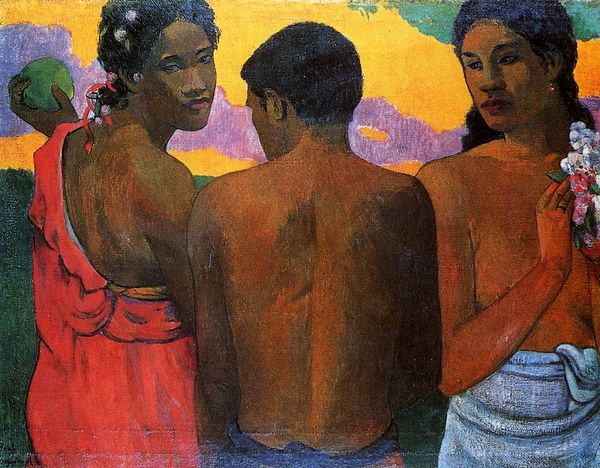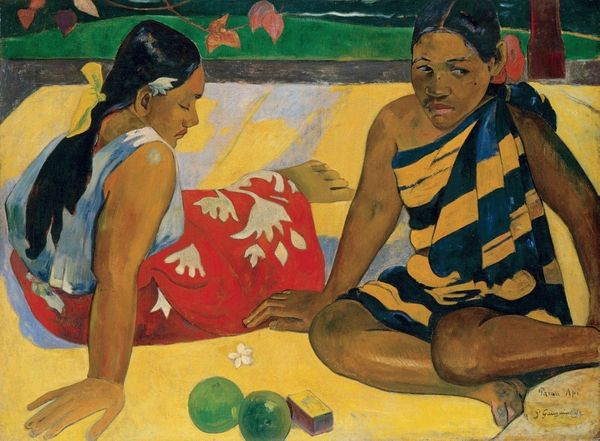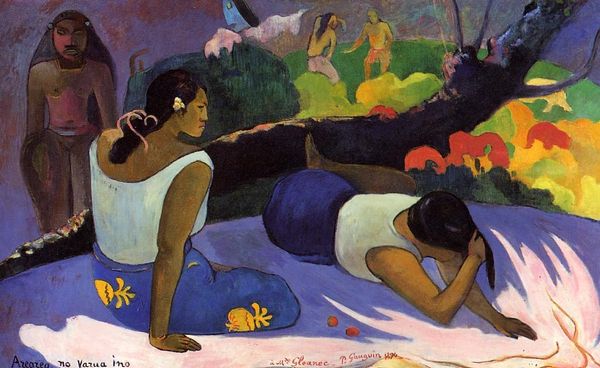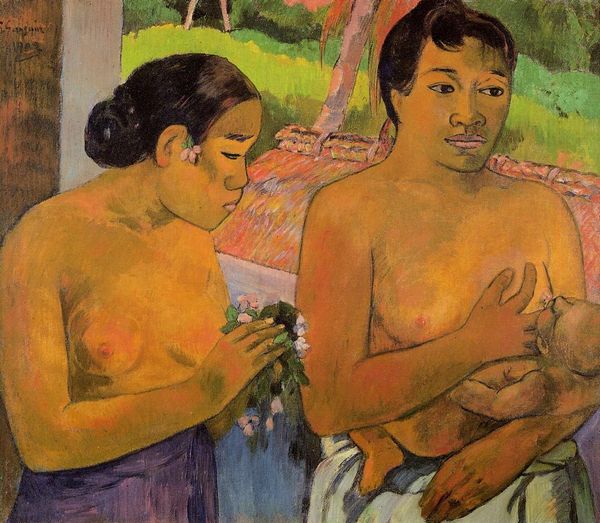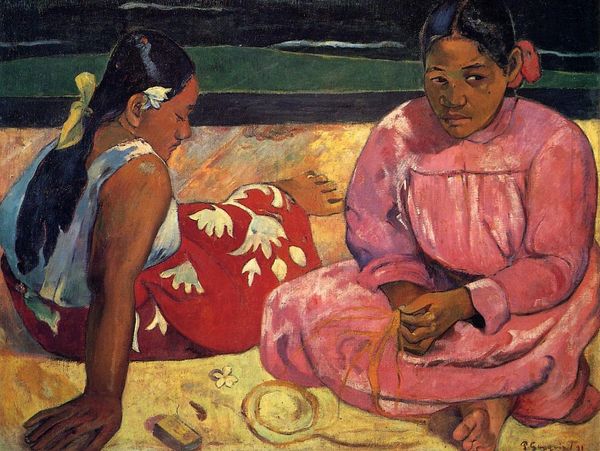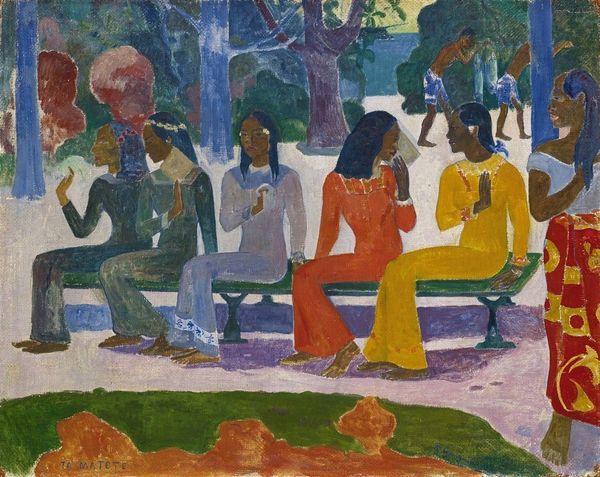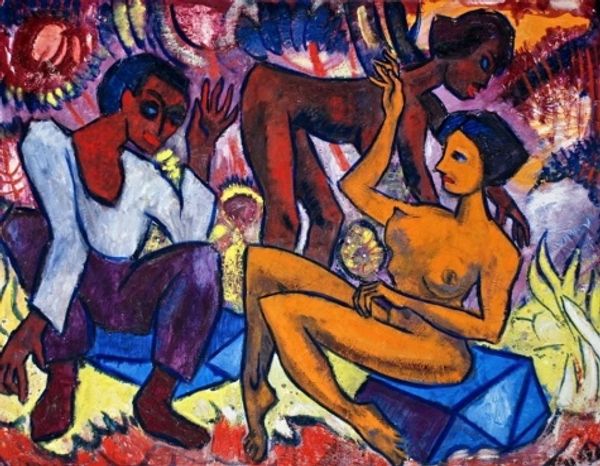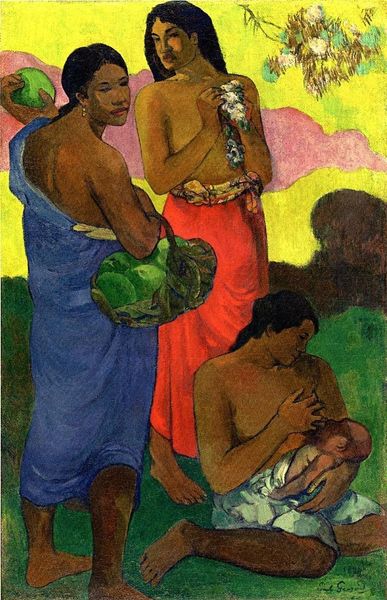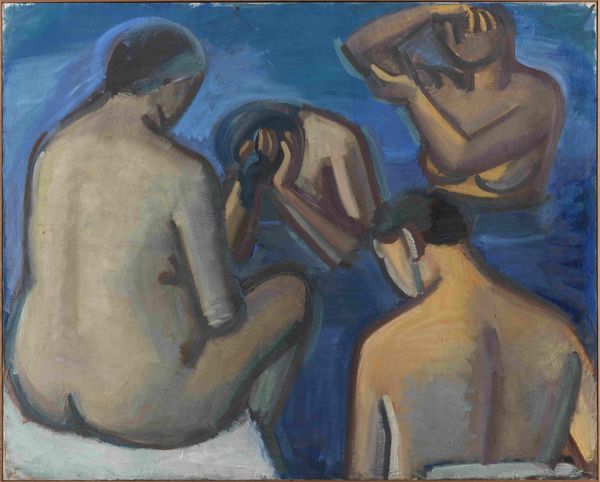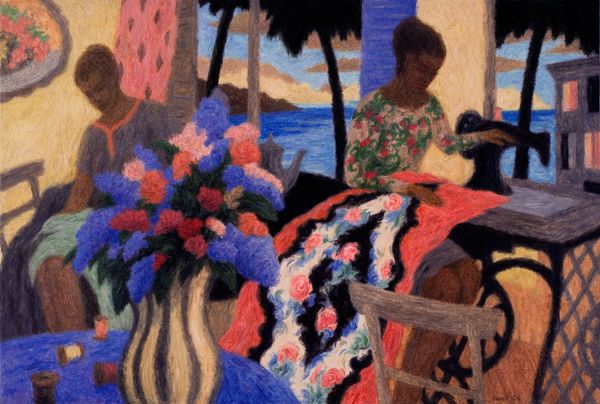
painting, oil-paint
#
portrait
#
figurative
#
painting
#
oil-paint
#
figuration
#
oil painting
#
group-portraits
#
symbolism
#
post-impressionism
#
portrait art
#
fine art portrait
Copyright: Public Domain: Artvee
Editor: Here we have Gauguin’s "Three Tahitians," likely from the 1890s and done in oil paint. The textures are beautiful and tactile, almost rough. It has this strange dream-like quality that makes me wonder about his view of labor, leisure, and craft in contrast to the subjects and his style. What’s your perspective? Curator: I’m interested in the constructed vision of Tahiti Gauguin presents. His emphasis isn't just on representing what he saw, but on manipulating the materials – the pigment, the canvas – to create a commodity for consumption back in Europe. Look at the ways he flattened space, deviating from European techniques, perhaps aiming to highlight the otherness of this place and people. Editor: So, it’s less about accuracy and more about... fabrication? I thought the materials had an inherent beauty of their own in their crudeness. Curator: Exactly. And that fabricated “authenticity” becomes incredibly valuable in the European art market. Think about the labor involved: the extraction of pigments, the weaving of canvas, and, of course, the exploitation inherent in the colonial gaze. What is the cost of this 'exotic' painting in human and material terms? Editor: That definitely changes how I see the piece. It's not just a picture, it's an object deeply embedded in a network of power and production. Curator: Precisely! And considering Gauguin’s biography—his complicated relationship with colonialism and his romanticized portrayal of indigenous life—we can see this painting as a potent example of how artistic production can reinforce or critique dominant social narratives. Editor: That’s such an important layer to consider. It's moved me away from just an aesthetic appreciation, toward a far more material understanding. Thank you for pointing out this perspective. Curator: My pleasure! Hopefully it has made you more critical of the process of not only the painting, but its movement throughout different historical, social, and economic movements, thus changing what it "is".
Comments
No comments
Be the first to comment and join the conversation on the ultimate creative platform.
